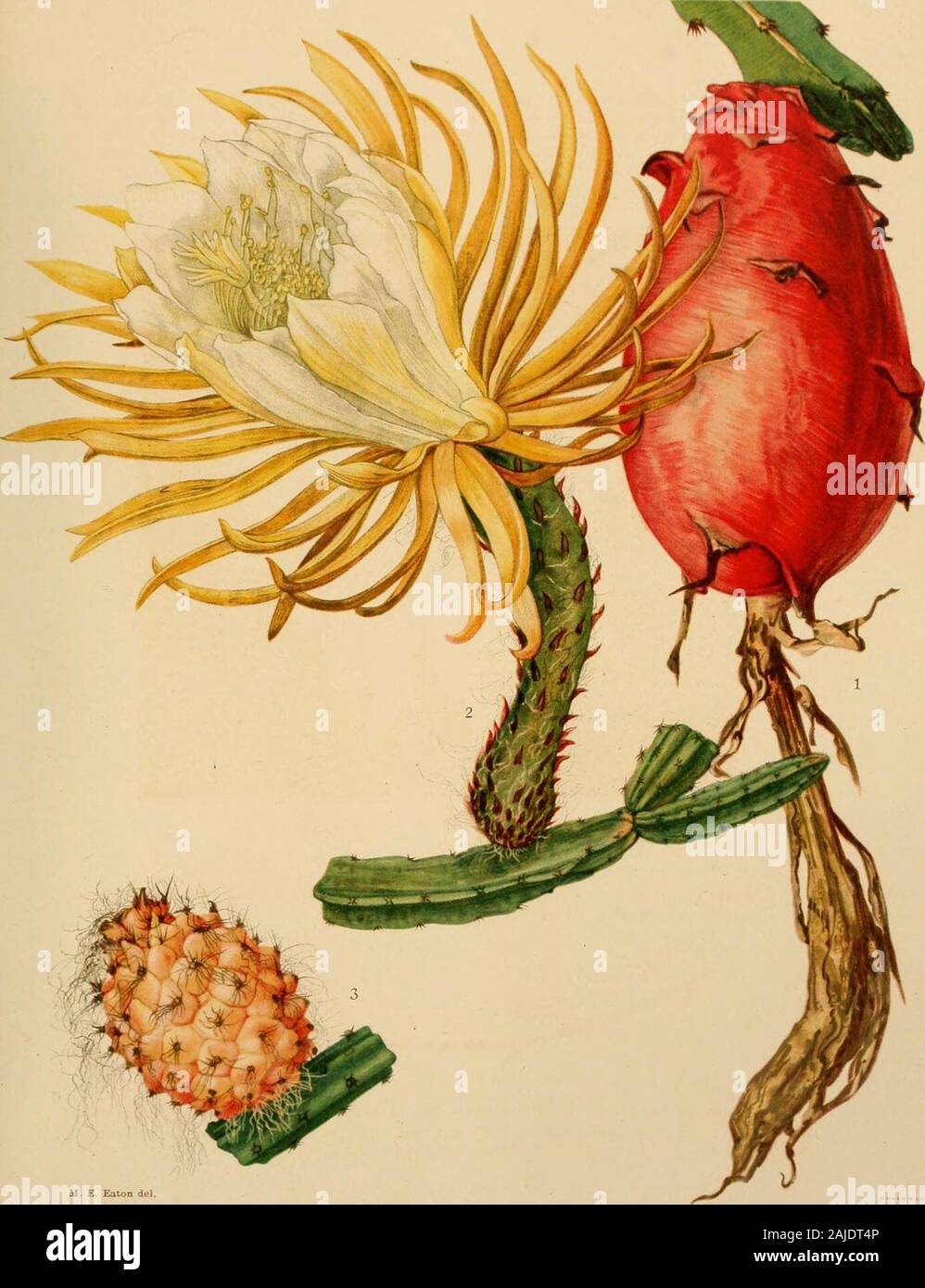The Cactaceae : descriptions and illustrations of plants of the cactus family . Fig. 282.—Selenicereus hamatus. Type locality: Mexico. Distribution: Southern and eastern Mexico. According to the Index Kewensis Cereus rostratus occurs on the island of Antigua,but Dr. Rose was unable to find it there in 1913. Fig. 283.—Part of branch of S. hamatus. X0.5. This species is common in cultivation in greenhouses and is occasionally seen in yardsand patios in Mexico. Although we have seen no wild specimens, it seems to be commonalong the eastern coast of Mexico, probably in the wooded regions. BRITTON

Image details
Contributor:
The Reading Room / Alamy Stock PhotoImage ID:
2AJDT4PFile size:
7.1 MB (315.7 KB Compressed download)Releases:
Model - no | Property - noDo I need a release?Dimensions:
1385 x 1804 px | 23.5 x 30.5 cm | 9.2 x 12 inches | 150dpiMore information:
This image is a public domain image, which means either that copyright has expired in the image or the copyright holder has waived their copyright. Alamy charges you a fee for access to the high resolution copy of the image.
This image could have imperfections as it’s either historical or reportage.
The Cactaceae : descriptions and illustrations of plants of the cactus family . Fig. 282.—Selenicereus hamatus. Type locality: Mexico. Distribution: Southern and eastern Mexico. According to the Index Kewensis Cereus rostratus occurs on the island of Antigua, but Dr. Rose was unable to find it there in 1913. Fig. 283.—Part of branch of S. hamatus. X0.5. This species is common in cultivation in greenhouses and is occasionally seen in yardsand patios in Mexico. Although we have seen no wild specimens, it seems to be commonalong the eastern coast of Mexico, probably in the wooded regions. BRITTON AND ROSE, VOL. II. M. E. Eaton del 1. Fruit of Hylocereus trigonus. 2. Flower of Selenicereus boeckmannii 3. Fruit of Selenicereus boeckmannii. (All natural size.) SELENICEREUS. 205 Illustrations: Monatsschr. Kakteenk. 9:23; Rep. Mo. Bot. Gard. 16: pi. n, f. 4, 5;Schumann, Gesamtb. Kakteen Nachtr. f. 7; Bliihende Kaktecn 3: pi. 161, 162; Wildeman, Icon. Select. 3:pi. 103, all as Cereus hamatus; Mollers Deutsche Gart. Zeit. 14: 340; DeLaet, Cat. Gen. f. 30, as Cereus rostratus; Rev. Hort. Beige 40: after 184, as Cereus kostratus;*Bull. Brooklyn Inst. Arts and Sci. 5: 236, 237 (2 figures). Figure 282 is from a photograph of a flower, taken at the New York Botanical Gardenon the evening of October 10, 1910; figure 283 shows a part of a branch.